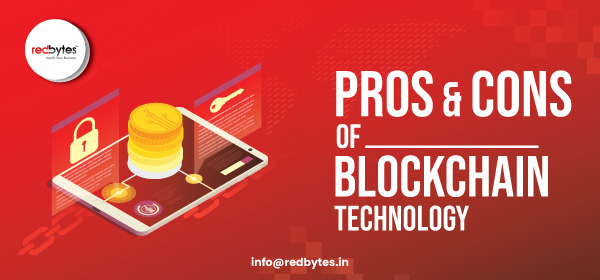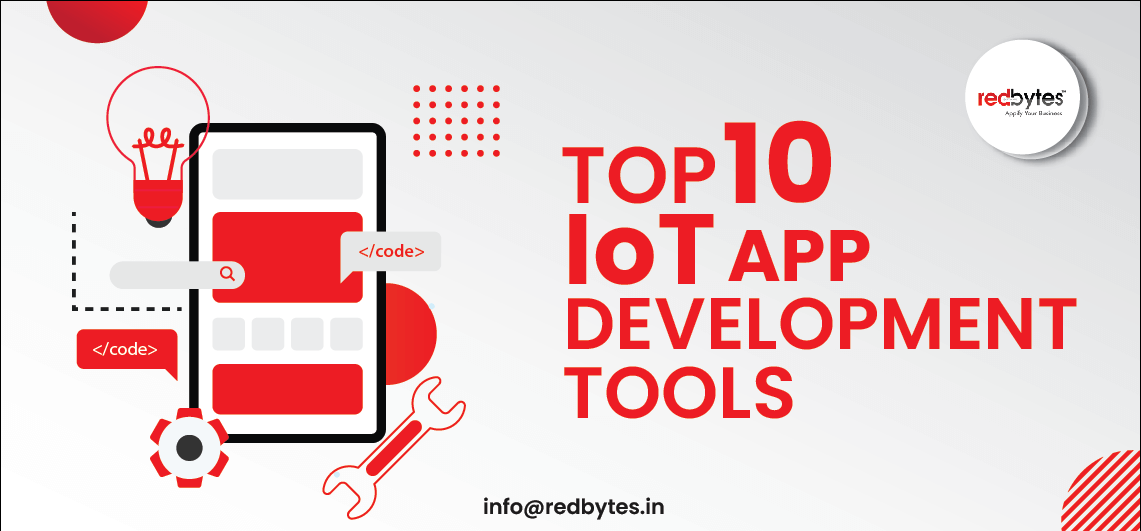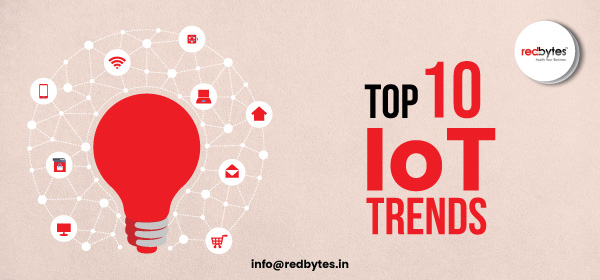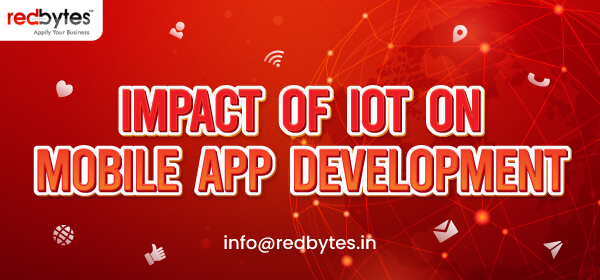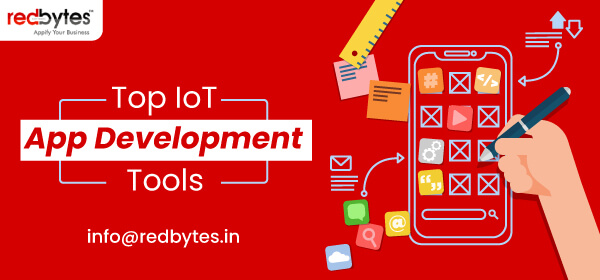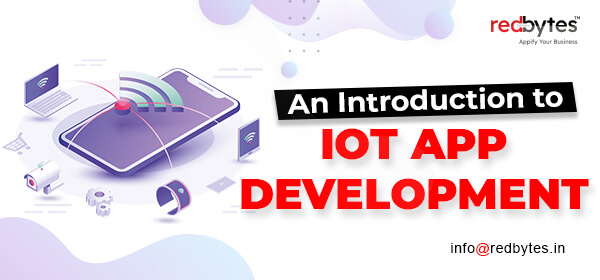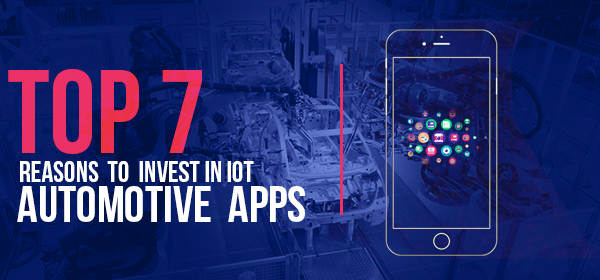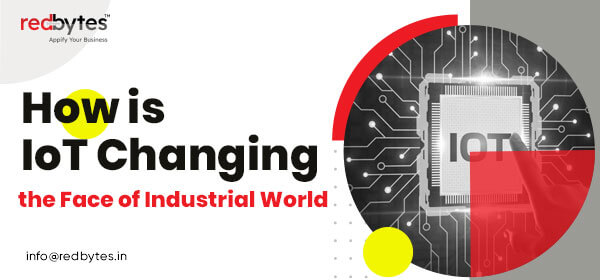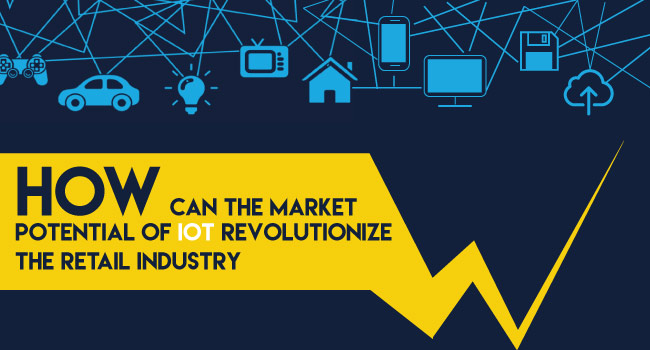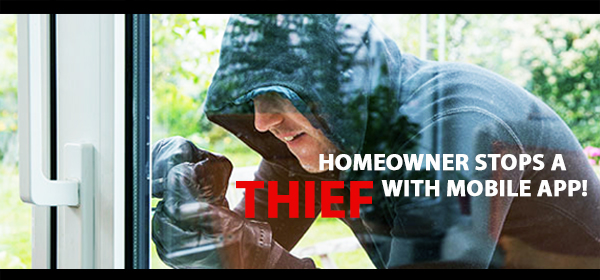Introduction:
IoT technology connects smart devices and physical objects essentially to create a remotely controlled network for constant communication and data exchange. Powered with automatic capabilities, IoT connected devices can operate efficiently and remain accessible to users 24/7.
Such embedded network of ‘things’ includes electronic gadgets, analytics software & servers, mini-sensors and database management systems that cleverly enable objects to collect and share data.
Using IoT-enabled solutions, individuals can transform the existing state of dis-engaged elements into a much controlled and synchronized connections where interactions among different objects remain uninterrupted.

Internet of Things (IoT) has come a long way and evolved remarkably since its early days of toddling. With more sophisticated revolutions made in system optimization, IoT technology has grown to penetrate the mainstream application market effectively. Due to new protocols and disruptive improvements, IoT ecosystem has become more refined, cost-effective, energy efficient and, of course, more secure.
The IoT landscape is still maturing, expecting more development because of soaring demand in various industry-specific applications.
Smart Phone as an IoT-enabled gateway
It can be an undeniable argument that smartphone can be considered as the first primary and thoughtful version of IoT technology in real time. It processes user data via the internet using tangible mobile interface. Close to the actual concept of IoT, smart phone serves many purposes such as:
- Parameters monitoring (monitoring health progress such as calories, heart rate, pulses, pressure, etc)
- Location tracking (locating objects, destinations, people, navigation, etc)
- Motion sensing (Responsive screen, screen rotation, motion-based interface control, etc)
Much of smartphone services and its apps are integrated with internet protocols which makes the device a perfect IoT gateway. With the help of active cell network or Wi-Fi, the device environment remains interactive and lively with its in-built sensors (GPS, motion sensing, sync, light intensity detection, etc).
Major Components of IoT

The term IoT is composed of two major words “Internet” and “Things”. Literally, this implies connecting things (objects and devices) through internet to build an auto-operated network. There are certain core components that define an IoT-powered architecture. Some of them are smart devices, sensors, energy, cloud, interface, gateway, etc.
Here we have shed light on some of the most crucial IoT components for you:
1. Interconnected Smart devices and Sensors
Devices and external sensors are lead components that form the significant part in IoT-enabled connectivity layer. The smart sensors collect the data from the surrounding ambience and transmit it to the next layer to process it further. Nowadays, due to evolved technologies, we have more advanced semiconductor technology that offers much more capable micro smart sensors used in various industry-specific applications.
Depending on its ability to measure physical parameters, here are a few commonly available sensors:
- Temperature sensors
- Humidity or Moisture level readers
- Pressure sensors
- Light intensity measurement
- Proximity detectors
- Thermostats
- Room ambience controllers
- Motion sensors
- Vibration sensors
- Heat optimizers
- Infrared and RF signal sensors

Device Connectivity:
Since IoT network runs on low power, most smart devices and sensors feed on low-power wireless network such as Wi-Fi, Bluetooth, Z-wave, ZigBee etc. This is why IoT encourages the development of low-power, low-cost units with compact and easy-to-control wireless capabilities.
Each wireless unit offers both pros and cons when compared on the basis of data transfer rate, power consumption and operational efficiency. The promising benefit of such IoT structure is its ability to ensure long battery life, increased efficiency and performance.
2. Gateway
IoT Gateway is an important component that helps manage bi-directional data exchange happening on different networks and protocols. It also essentially translates various network protocols and establishes interoperability of the connected devices in IoT network.
The unique aspect of IoT Gateways is that they are configurable and can pre-process the sensor-generated data locally before it is transmitted to the next stage.

The Gateway also offers data security for IoT networks by means of high-quality encryption techniques that work as a protective layer for the system against unauthorized access and malicious attacks.
3. Cloud: Distributed Database Management
Since IoT networks generate massive amount of data from users and devices, it needs reliable management. IoT cloud offers sophisticated real-time tools to collect manage and store the data. Owners and service operators can remotely gain access to their data in the moment of taking critical business decisions.
IoT cloud is composed of high-performance network of servers, which forms distributed database management systems, configured to speed-process the data coming from billions of connected devices, sensors, protocols, data storage systems.
4. Predictive Analytics
Having powerful analytics software embedded in an IoT network helps process and converts the valuable data from billions of smart devices and sensors into meaningful insights. This insight can be further interpreted to develop more effective system improvement strategies or deliver smarter solutions.
5. User interface
Users conduct a physical interaction with their user interface which is a visible, accessible part of the IoT-powered network. For enabling smooth, effortless interaction with IoT devices, IoT developers and UI designers must build a perfect, easy-to-use interface.
UI technology has potentially improved in offering more advanced design and simple touch panels to simplify the management of complex tasks. Smart homes are now equipped with smooth touch-control panels instead of hard switches.
Why Businesses are Adopting IoT

Technological advancements are taking place way too faster and their rapid-paced implementations across a larger scale of industries are transforming the way of doing business. IDC in its latest report suggests that the total global IoT investment has reached $772.5 billion in 2018. This is the clear indicator of how companies have already considered IoT mobile app development as an undeniable future.
For businesses constantly worried about surrounding marker competition, adopting trending innovations like IoT is a pragmatic choice. To sustain the monstrous competition built around technological solutions, businesses must see being adaptive as the only way to fight the chance of being extinct. The connected devices of IoT network offers realistic picture and detailed analytics of customer interactions which businesses can leverage to make timely decisions to enhance service quality and profitability.
Apart from these, there are a few more singular benefits offered by IoT connected devices. Here we have summed up a few good reasons why businesses thinking to revolutionize their enterprise model can turn to IoT and IoT app development company.
Real-time Insights from Connected Assets
Leveraging the power of interconnected IoT network, businesses can track and understand the functioning and performance of their assets. They know the location of their assets and when exactly the asset needs preventive maintenance. By predicting maintenance, the IoT system can automatically notify the operating people to rush to the site and control the situation.
Ambience data:
Through sensitive sensors, technicians are able to monitor the asset state based on the conditions of temperature, humidity, or other weather parameters. IoT apps help companies can predict maintenance cost and avoid possible threats to their assets.
Work planning and efficiency:
The data thus collected from devices will be sent to analytics to extend its meaning and effect. After processing the data, it becomes easy to plan ahead and make clear decisions about work, ultimately increasing operational efficiency.
Pro-active approach:
Since asset information is constantly monitored, companies can make pro-active strategy for upcoming maintenance, service improvement, procurement.
Better visibility and production:
Manufacturing companies can gain better control and visibility across various machinery, suppliers and plants by connecting all of them with IoT apps system and enable agile, scalable and cost-effective production units.
Decreased damages:
With the direct access to real-time data about equipment’s performance allows organization to assess and rectify the problem by significant margin before it causes a serious breakdown or other unthinkable hazards.
1) Increased Visibility of Business Functions
With myriad of IoT devices transmitting most valuable data internally, you have a greater opportunity to develop market awareness and boost performance scale of your enterprise. Using digital form of interactions in existing operating models, IoT offers enhanced business value and predictive capabilities to enable better visibility over core business processes and functions.
As a result, companies can gain transparency into how to use the collected data, which ultimately adds to efficiency and productivity
2) Staff Monitoring and safety management
IoT encompasses more diverse set of devices than you can possibly conceive. Practically speaking, organizations can strategically achieve better view of their worksite scenario by integrating advanced IoT wearables.
Staff workers can leverage wearable technology in precarious situations to allow companies to monitor the health, exact location and safety compliance of every employee. The data derived from the devices can help businesses refine their industry practices and policies, establish new regulations and adopt safe accident management standard.
3) Excellent aid for Cargo and Logistics
Cargo and logistics industry has a lot to gain from integrating IoT solutions as companies can get real-time data and insight about operational status of their fleet. Once connected inextricably into IoT network, Cargo companies can get accurate updates about minute interactions happening among customers and drivers and devices and operators.
The approach enabled by IoT apps can help monitor equipments as the travel on the road, track driver behaviour, predict its maintenance or accidental damages and ensure customers receive seamless experience through well-managed ETA.
4) Accurate perception about consumer’s choices and preferences
Abundant data and insights collected from connected IoT devices and sensors via IoT apps are what make companies evaluate their existing business model and build a refined strategy to create bigger influence on customers.
IoT network not only helps enterprises remodel their operations, but also blurs the age-old barrier between customers and brands. Cycling the data emanating from connected assets, businesses can grow resourceful to take smart judgement and intelligent decisions related to customer service improvement and product innovation.
5) Personalized Interactive experience
Addressing customer needs is the popular mantra for businesses to quickly to find themselves on the path to success. Using IoT as a core technology, IoT app developer can help businesses integrate interactive displays that provide real-time answers to customers’ queries. Through interactive displays, organizations can present their own set of products and solutions in a personalized way so that customers walk through their options and pick what matches close to their requirements.
Nike, the global footwear brand, has launched this solution to enable customers to use their phone for personalized experience. All you have to do is to point your device at any product in the store and use store’s interface, and your phone will show detailed information about the product and pricing.
6) Exemplary supply & inventory management
IoT apps and big data analytics can shake hands together to reform business model and introduce new approach for effective resource management. IoT solutions can be added advantage for emerging and medium-scale enterprises who wish to bridge the gap between demand and supply and empower their existing inventory management system.
IoT helps combine CRM and ERP of an organization and enable intelligent communication among devices to achieve superior goals of customer retention, timely delivery, and service consistency.
7) Transparent business with new opportunities
IoT has a lot more potential than what business enterprises initially considered. IoT mobile app development can produce more opportunities by changing the way customers and brands interact. In order to get best results, business must know the extent of IoT integration and grow more ability to adapt to innovative devices and sensors in a highly connected space.
Creating a well-controlled, secure and powerful nexus of millions of devices, IoT wave is perpetually creating new opportunities for major sectors like retail, healthcare, ecommerce, hospitality, manufacturing, security and more.
8) Revenue improvement
Integration of IoT apps help diminishes cost and increase more chances of generating newer revenue streams. According to tech market leaders, IoT has futuristic potential to save thousands of dollars often spent on business productivity alone and enrich the functioning of bottom line.
9) IoT sweeps through many industries
Another reason why IoT could drive your business to growth and success is its ability to touch and transform a wide range of industries. On the canvass of IoT mobile app development, you can paint the picture of any industry disruption you like including:
- Retail
- Household applications
- HVAC power system
- Manufacturing
- Urban lighting
- Agriculture
- Healthcare
- Security
IoT has answers and solutions for many problems that hinder the future growth of ambitious enterprises and organizations provided that you have engineered the best business-specific IoT solution in place to work for your business model.

IoT App Development Tools

The way Internet of Things is forging ahead in its capability to revolutionize numerous aspects of business and human life, we can say the impact of IoT connected devices is growing powerful.
This is why IoT mobile app development is an unstoppable market buzzed with a lot of opportunities for aspiring IoT app developers. However, IoT app developers must seek tools that actually mark the development process with swiftness, suitability and effective learning.
Thankfully, today’s avid IoT developers have brilliant range of open-source tools and platforms to build superior and goal-oriented IoT apps.
What are these tools and what should you know about them before you start with any of them?
Based on various development styles and industry challenges, here are top IoT tools that an IoT app development company can utilize to build successful apps:
1) Arduino
Arduino development kit is the best companion to emerging developers who aspire to be an established name in IoT development field. Using this tools, one can build an interactive app suitable to IoT economy.
Arduino stands out in its ability to offer software tools to IoT novices and enables cloud-based system so that developers can easily share messages across the boards. The system comes with its own Arduino based programming language & works best for users who lacks substantial background in app programming and wants to make a name in the IoT apps market.
2) Tessel -2
If you are into building basic-level IoT solutions and prototypes, Tessel-2 is equipped with numerous sensors and modules. It integrates with a number of modules such as RFID, camera, GPS and the accelerometer and more.
Since Tessel hardware device can be programmed using Node.JS, Java developers with expertise in Node.JS have a great opportunity to develop IoT apps. Tessel is known for offering a robust IoT platform.
3) Home Assistant
Home Assistant is perfect solution for developers who wish to master the space of smart home solutions and establish seamless connectivity between internet and living space of the house. Running on Python, Home Assistant suits modern IoT standards of IoT apps and is the best answer for interacting with digital hardware system for and tracking your device.
This tool can be also during internet outages and is reliable for data security. Its easy to use on Desktop and laptop, but it may not be the best option if you seek constant, uninterrupted connection.
4) Canopy
If you want to weave a viable structure of IoT cloud, the tool Canopy can be your apt companion. The platform helps you simplify the process of creating an IoT cloud where Canopy itself is a heroic cloud relay between IoT apps and IoT devices.
Canopy Cloud service is the server-side open-source component that you can run on any type of a Cloud platform.
5) Zetta
Built on None.JS, Zetta is a brilliant server-based platform that takes devices from the various brands to convert them all into API. Zetta is considered to be a pioneer in IoT mobile app development solutions and heavily uses cloud in order to be accessible and operable virtually from any location.
The best part about using Zetta along with Arduino is that users can benefit from marrying the best of reactive programming with WebSockets, which suits the requirements of data-packed IoT implementations.
6) Eclipse – IoT
Eclipse – IoT is perfect for an IoT app developer who is fond of building IoT hardware, Gateways and Cloud platforms. The IoT tool has a grand reputation of being a collaborative effort of various individuals and companies who are passionate about the development and implementation of IoT technologies.
If you explore the wide spectrum of services and projects accomplished by the Eclipse team, you will find that Eclipse IoT has potential to help you enrich technical expertise.
7) Device Hive
Device Hive is a popular cloud-based IoT apps development framework that enables machine-to-machine communications and allows users to create and connect their application effortlessly.
Like Home Assistant, Device Hive is promising in creating automotive system for your existing processes and is especially reliable for enabling smart home systems. This easy-to-use and handy, Device Hub empowers you with a remote-controlled operations.
8) Losant
Losant is a considerable option for developers who want to simplify IoT app development routine and get the most out of it. It could be your top-class platform that has admirable capability to help you build IoT solutions with speed, efficiency as well as security.
9) Platform IO
Platform IO is another solid cross-platform IoT development tools that contains a build system with a library manager and IDE. You can either port the IDE on tops of the Atom editor or use it as an installed plug-in.
What makes Platform IO stand out is that it is compatible with more than 200 boards and offers an impressive debugging integration solution.
10) IBM Watson
Close to AI, IBM Watson is an API that allows IoT developers to use a host of cognitive computing features in IoT apps. This innovative tool can be harnessed to predict the future requirements based on the current analysis of data it monitors.
IBM Watson not only simplifies the job of IoT developers with numerous services, but it also offers competitive advantage by employing chatbots and their power to process, analyse and understand natural language.
11) Dronesmith
Drones are one of the most significant and compelling topics of debate in IoT domain recently. Dronesmith offers a feasible rescue from these obstacles and helps IoT developers in many ways.
It has an in-built airborne computer, known as Luci, installed in drones. Using Dronesmith, an IoT app developer can easily develop custom drones based on pre-defined specifications.
As more companies and consumers take interest in smart approach and embrace IoT-connected devices, we observe the rising demand in IoT development. The main driving momentum for incredible IoT growth is provided by the expanding community and open-source IoT tools. The ambitious IoT developers can exploit these tools and platforms to achieve their dream of developing IoT apps and convert their distant vision into reality.
Things to Note While Designing an IoT App

For a couple of decades, IoT has been a scintillating topic of discussion for Tech vendors and developers alike. The main reason for the hype around IoT mobile app development solutions is its awe-inspiring calibre to transform the business landscape through technological capabilities and advanced cognitive abilities.
Another advantage that makes IoT a phenomenal lynchpin is its increased affordability.
However, in order to design a perfect structure of IoT apps, there are certain guideline and tips that IoT designers and business innovators should ponder sincerely to get the best out of this resurgent technology.
Research and explore before developing IoT apps
Before you draw towards the action of development, its important to first mull over the requirements and suitability of the IoT apps and future challenges it is going to bring.
The best way to gain the insight is to research in deep and explore the IoT market and understand how inter-connected things should really work.
Think about data management and analytics
The next step for designing an IoT app is the ingestion tier – which marries both infrastructure and software to enable data exchange and management. In this subsequent layer, you can think of all the ways to organize and receive the data coming from devices and sensors.
Following this is Analytics tier which entails the process of processing the data organized in the previously. Then comes the app used by end-users. For designing purpose, IoT app developer needs to focus on more on understanding the end-user experience and data analytics part.
Hardware compatibility of mobile devices
Building an IoT app should also involve checking the suitability and compatibility of mobile devices with IoT app. Be it IoT iOS app or android apps, the app’s overall performance depends on the type of hardware OS environment you have chosen.
A lot of precaution and considerations go into IoT development strategy when it comes to making it compatible for device hardware platform since the design rework may get expensive and tiring if the app does not function harmoniously as an IoT android app or iOS app.
Determine the scalability of apps
Over time, as businesses flourish in the market and technology evolves, a business would have to collaborate with an IoT designer or a suitable IoT app development company to figure out scalability options for apps. This is one of most crucial factors while designing an IoT app especially when project is aimed at putting bigger impact on wide consumer base.
Ensure the better security of IoT devices
As it has always been, the aspect of IoT system security is still questioned by world-spread businesses that expect zero tolerance to data loss and vulnerability. If adopted on a prodigious scale, IoT security becomes an essential factor freshly built IoT apps need to address.
Some of the strategic implementations to be taken to fight system vulnerability generically include:
- Sturdy encryption methods
- Robust yet user-friendly authentication features
- Knowledge of underlying ecosystem of each device in use
- Easy-to-use and clear security features
- Understanding and protection of digital touch points of end users
- Multilayered approach of building firmware protection
- Security of each hardware component in place
IoT applications, as opposed to regular applications, conduct interactions with hardware and not humans, which mean the firmware used by IoT mobile application development experts should ensure proper security with frequent updates.
Recognize the difference between usual mobile apps and IoT apps
Mobile app we use today are focused on end users unlike IoT apps. Usually mobile app development revolves around a niche market and reaps responses based on a specific function. But IoT technology bases its functioning on objects and processes the communication across industries and systems.
It is therefore important to consider the future IoT-powered vision of fully automated smart home or the rise of smart city and other similar disruptions. IoT app developer should recognize the fact that IoT system straddles beyond mobile app technology and enables controlled communications with security and utility industries to facilitate larger operations such as efficiency measurement, energy consumption optimization, peak load management, etc.
Conjure the future picture over instant profits
If you have already set eyes on IoT mobile application development, conjure a big future picture of how IoT is going to be beneficial in long term. While the job of building IoT applications is quite onerous, the results you get will be impactful and help your business thrive down the future road. Think of a smart automated home blended technologically with an evolved version of smart city.
In a way, the technology is still in into embryonic mode and growing. We are likely to see more of IoT apps in terms of growth, performance and innovations in the coming years. Hence, keep the product open for future scalability to secure more benefits and stability in the market. Keep your vision about IoT app development futuristic and supple.
Choose the right developers for an IoT development team
Though listed at the last, this comes down as the primary job: collaborating with the right developers and making a stalwart IoT development team. Make sure the IoT app developer you choose has project-specific resources and hands-on knowledge to identify potential security risks and is versed in profound aspects and challenges of IoT development. Take a logical decision while emphasizing on quality and relevance and not price as you look for the competent leaders in the IoT market.
Impact of IoT in Mobile App Development

From the smallest of economies to the considerably larger scale of city areas, IoT is prepared to transform the landscape of anything that can be connected through internet.
The most interesting part of IoT is that it innovates our digital culture as how creative minds and tech enthusiasts from myriad business verticals have begun to explore the space of IoT-powered mobile app design and development.
What initially commenced as a thought has now inspired many IT market leaders to tap into this domain which can help develop solutions and products to actualize the powerful, automation of connected world. IoT-connected world.
Importance of IoT for mobile app developers
From an honest perspective, mobile app developers are amongst those who have immensely progressed in making IoT technology work in their favour. By exploiting the full potential of IoT in mobile app development technology, they have effectively unlocked the bigger market while catering to the rising expectations of tech-loving demographics.
IoT enables app developers to fuel mobile apps with extraordinary features and seamless controls, thereby equipping users with enjoyable convenience. For instance, users can remain connected 24/7 and can remotely control various devices and appliances through IoT apps on their smartphone.
How IoT impacts mobile app development space?
The following are the major impact we are likely to experience from IoT in mobile app development:
1) New opportunities, unusual power
IoT developers are most likely to meet new challenges that will drive them towards new opportunities of app development. With IoT offering great promises, businesses will take a leap of faith, knocking the doors of a capable IoT app development company to discover innovative solutions that connect them well with their customers.
As IoT grows and advances even more, mobile app developers will be able to build better apps that improve connectivity among people just like Uber.
2) The demand for more evolved skills
As the mobile apps rolled out by developers have vague future and limited attention span, to stay competitive in the relevant market, IoT-powered apps have to be adaptable to device functionality, smartphone platform and new updates. With apps, there is usually a big chance of being obsolete if a new technology arrives to change the game.
3) Five-tier IoT development process
Another considerable impact to notice is the segregation of the entire development process. Presumably, five-tier approach for multistage IoT development would be preferable. The process will encompass diverse stages based on device, gateway, data, analytics and application, thus making the development complete and mature.
4) Use of ready-to-deploy Third-party platforms
In order to save time spent on IoT mobile app development, it is advisable to opt for ready-made IoT platform that enables rapid deployment of apps. These third-party platforms are born-ready to interact and mingle with diverse range of smart objects to be connected in an IoT system. By 2022, the number tools in considered to increase from 120 million from 2017 to 44 million.
We already saw widely used IoT development tools that help accelerate development process. All developers need to do is to learn how to use APIs to connect to these readily available platforms.
5) Device Specificity
In IoT network, what matters most is app’s ability to remain compatible with the nature of device it is integrated with. It is therefore important for developers to make sure they know the exact functionality and tendencies about device environment they are designing the apps for.
Before embarking on building IoT apps, Software engineers must have profound insight into the technology of things connected in IoT as well as the ways to connect with the app.
6) Dawn of developers with dedicated IoT expertise
With IoT growing to resonate with the mainstream hybrid mobile app development market, soon there will be a demand for a much unified IoT approach and niche developers to build dedicated project-specific IoT expertise.
This signifies how the current trend of businesses expecting versatility instead of specialized IoT skills will fade away. There would be no one-developer-for-all lookout. When the technology reaches the pinnacle of maturity and usage, enterprises of any scale will emphasize the idea of hiring developers with specialized IoT knowledge.
IoT technology, thus, puts a larger impact on mobile app development industry, ready to pioneer the revolutionary trend.
7) Enhanced security strength
Of course, security has always been a big question for mobile app users who think mobile apps pose a constant threat to the data security in the existing online ecosystem. But as IoT expands in its strength and prevalence, it is most likely to influence the current status quo of security concerns.
IoT domain is greatly active and constantly updated, which will help an IoT app developer improve the defensive structure for mobile apps and create a mighty barrier to fight security threats.
Though device system can remain fairly accessible to developers as an entry gate, Data encryption and stronger authentication system will increase the overall protection of sensitive data by means of four tier IoT dev components.
Mobile is the main fuel
As businesses seeking lucrative opportunities are curious to dive into the IoT Ocean and connected things are becoming the future of mobile app development, IoT application development has increased potential to bloom in the space of enterprise-focused and consumer-oriented mobile apps. Since mobile devices offer superior control, immense convenience and technical compatibility for building IoT apps, it is unquestionable that mobile devices will be the major factor to fuel the IoT app development trends.
IoT Mobile Solutions (Android & iOS)

IoT mobile applications connecting a mobile device to various other smart devices and sensors mean a powerfully connected world with smarter control, monitoring and management. From enterprise businesses to consumers, IoT apps are transforming the way we experience and interact with devices. With IoT mobile solutions and development platforms, there are numerous possibilities of solving many puzzles with utmost security. Here are some of the IoT-powered mobile solutions you can build for Android and iOS device platforms.
Thinkable solutions across wide tapestry of devices
On the canvass of IoT mobile app development platforms, it is easy to build IoT mobile solutions for both Android and iOS. The technology can enhance the interactions with devices and enliven existing applications by giving it superior power and control. IoT developers can turn existing apps into IoT-enabled solutions by connecting them with diverse objects such as gadgets, sensors, devices, data management systems and cloud.
By making unthinkable thinkable, IoT technology partners help build perfect IoT solutions that deliver exceptional user experience. Through IoT hybrid mobile app development, mobile apps can be easily deployed to Android, iOS, Windows and MacOS X with an effortless single C++ codebase.
Proximity sensors and location tracking solutions
Despite GPS capabilities, IoT solutions can be built to detect proximity of connected objects or users without using mobile phone’s GPS tracker. Be it indoor or outdoor, precise user location awareness and events monitoring can be made possible for geometric zones for any physical location. Apps for Gadgets and Wearables
Read also : 10 Best IoT Development Tools 2021
IoT apps and ecosystem can work best for both gadgets and wearables. A lot of use cases have already been developed with incredible progress in the domain of IoT-enabled apps for gadgets and wearable devices.
By bringing the interactive capabilities between these gadgets and smart wearable devices, developers can harness the boundless power of IoT to create unforeseen potential for refreshingly surprising user experiences.
Monitoring and Predictive analytics solutions for healthcare
For healthcare domain, IoT app developer can help build a versatile app with an intuitive UI that connects the entire existing network of sensors, devices, gadgets and monitoring displays and deliver a solution.
The app can be versatile enough to perform its pre-defined capabilities across a range of device platforms including mobile, TV, Desktop or watch. If desired, the comprehensive IoT solutions can be enabled to collect medical data, generate alerts and interact with cloud to produce accurate predictive analytics. Such solutions can be customized to control gadgets or keep users informed of existing environment and biological changes.
Digital transformation for manufacturing industry
Thanks to core technologies like IoT mobile app development and AI, enterprise businesses can now conceive the implementation of digital transformation models on an industrial level.
By using automation insight as key enabler, IoT developers can help manufacturing industry reap maximum advantage of enhancing productivity and quality through highly monitored, properly controlled and streamlined IoT-based solutions. Manufacturing plants can avail IoT solutions that are proactive, robust and user-friendly and offer complete support for real-time sensor control and data monitoring & management.
Connectivity methods
To enable the consistent data flow between IoT apps and the congregation of devices, gadgets, internet and sensors, the developers can supply communication-empowering solution. The final product not only comes out as streamlined features, but also ensures seamless connectivity of various internet-connected components by means of communication protocols (Bluetooth, WIFI, REST etc.)
Data security
Now that IoT technology has progressed a lot and is still evolving exponentially, data security of IoT-connected devices has significantly improved. As you collaborate with a professional IoT app development company, it becomes easy for your organization to capitalize on their time-tested resources that ensure layered protection and encryption of user data. With enhanced data security standard made possible through strong authentication process and encrypted communication, IoT developers can design apps that communicate in real-time with clouds, sensors and other devices securely.
Cost of IoT App Development

IoT applications are essential for everyday activities like work life management, energy optimization, domestic lifestyle, transport and manufacturing industry. Based on the way IoT apps are advancing and developing our lives, we can say soon we all be as dependent on IoT-powered mobile apps as we are on conventional-style mobile apps. Looking at this promising scenario, businesses from diverse industries across the globe have elevated their interest in IoT app development, mulling over the thought of investing massively in IoT mobile app development services.
Therefore, while focusing on various aspects of IoT solutions, it is mandatory to discuss the cost estimation of IoT projects of many scales.
Influence of Preparative stage on cost
In this stage, the goal and main idea of the app are explored in details along with the benefits of the app and how it can be used by the end user when the product is finally ready to release.
In this stage, resources like essential hardware, platform, internet connectivity required to instigate the development process is calculated and discussed along with the features of the IoT app. one must also focus on possible issues and challenges that may arrive during IoT mobile app development. Hence, it is important to weight cost on these aspects right in the preparative stage
Make sure the developers engaged in the project have proper instructions and information to move ahead. Developers should be equipped with guideline enough to avoid the tedious, time-consuming corrections and iterations in the future.
Feature-dependency of IoT app development cost
Some of the features that may directly influence the cost of IoT app development mostly include geolocation, payments, synchronization, third party API integration, data encryption, auto learning feed, enhancements and content management system. For ensuring the cost efficiency, the IoT app developer tends to use the reusable components and the selected platforms for the purpose of development.
Scalability is another factor that drives the final figure of cost calculation. As IoT technology continues to expand and evolve, there is a big chance of the future enhancements and add-ons, which further augments the overall cost of IoT apps.
Cost estimation for different types of IoT apps
The cost of the IoT app varies according to the different features and technologies. The estimated total costs of different types of IoT apps are as follows:
- Media- It starts from $ 10,000.
- Infrastructure management- It starts from $ 25,000.
- Environmental monitoring- It starts from $ 10,000.
- Energy management- It starts from $ 27,000.
- Manufacturing- It starts from $ 50,000.
- Healthcare and medical systems- It starts from $ 30,000.
- Home and building automation- It starts from $ 50,000.
- Transportation- It starts from $ 25,000.
- Consumer IoT apps- It starts from $ 35,000.
- Management of smart systems and smart cities- It starts from $ 50,000.
The cost optimization through outsourcing
The cost of the mentioned apps depends on the geography location, experience and size of the IoT app development company. The best way to save money and time is by outsourcing the projects because the development partner of the IoT app project provides the necessary staffs required for the design, maintenance, conception and development of the app.
Total IoT development cost
The total aggregation o IoT development cost is attributed to the level of complexities as well. To justify this area, here is the cost slab for you to consider:
- Simple development- It costs around $ 18,000.
- Middle development- It costs around $ 18,000 to $ 24,000.
- Complex development- It costs around $ 30,000.
Final costs of IoT app development
The factors upon which the cost of the IoT app depends entirely are hardware, infrastructure and the application:
- Hardware– The cost varies according to the complexity of the hardware, i.e., more complex is the hardware, more is the cost. For example, the IoT device that uses smart locks, cameras, motion sensors and other smart technologies will cost higher than the simple and normal IoT app.
- Support system-The IoT investment becomes expensive by the complex support systems provided for the security and safety of the users. Also, the implementation and development of the complex support system also adds to the investment. The factor of certification also adds to the monetary investment.
- The Application complexity– The costs of IoT app development also depends on the complexity and size of the application. The application is the major factor that helps to run the device and therefore sufficient investment are done so that the apps run smoothly and provides the necessary benefit to the users.
Summary:
‘IoT’ the futuristic technology has incontestably taken the digital world by storm and changed the structure of mobile app development. By offering seamless connectivity through the network of various devices, sensors and gateways, IoT apps present in the smartphones and tablets are revolutionizing almost every sphere it touches, making the world around us smart, intelligent and more proactive than ever.
Gartner once predicted that IoT will see more than 26 billion connected things by the year 2020 – which is staggering. These things are not just limited to a few good devices and sensors. Instead, futuristically speaking, it has a broader perception of connecting smart homes, smart cars and smart cities in a cohesive, highly functional, extremely efficient model.

As for businesses, the best competitive advantage springs from the fact that customers are already down to using mobile apps for their routine chores. With that said, IoT mobile app development will also enable business enterprises to unleash more potential for interactive capabilities and personalized customer experience by affording the luxury of real-time data analytics.
With all this, IoT has definetly spread its wings tapping into diverse industries including healthcare, automotive, electronics appliances and manufacturing. Hoping that IoT continues to grow, businesses can roll up their sleeves for the upcoming future and collaborate with a renowned IoT app development company to propel their business growth model.
Read also : Top 7 IoT Trends That Will Change 2021
Now the only question left for today’s IoT development specialists is: How to create an effective IoT strategy to help businesses win?
